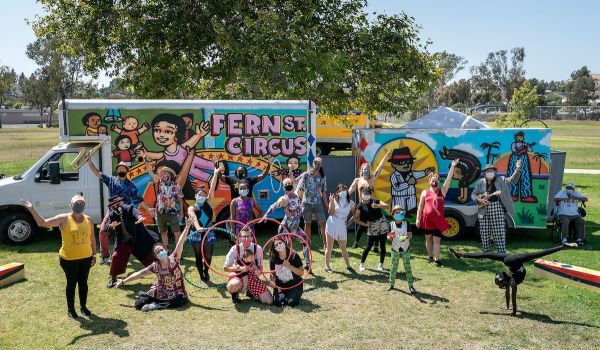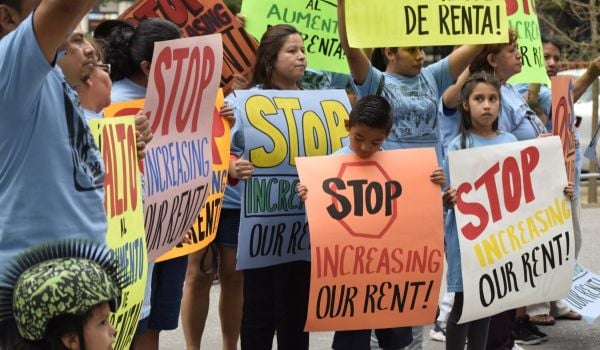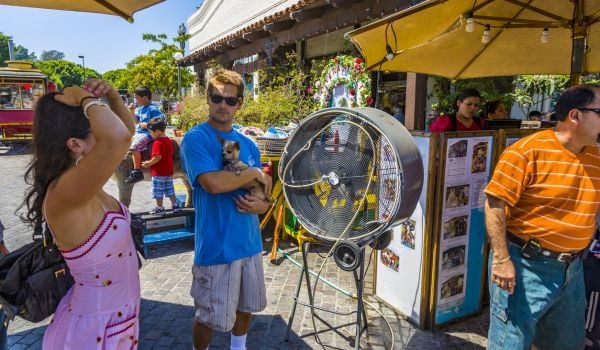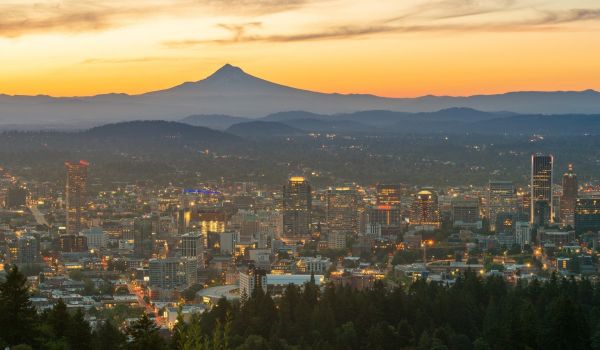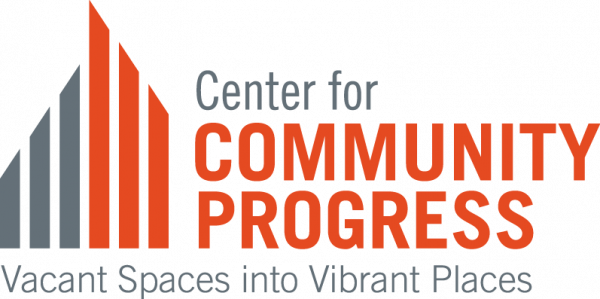Welcome to “The Mobile City,” our weekly roundup of newsworthy transportation developments.
Austin voters just approved two ballot measures that together promise to reshape the city’s transportation infrastructure. One will lead to new light rail and bus rapid transit lines, and the other will improve bicycle and pedestrian infrastructure as part of an overall citywide transportation improvement plan.
Meanwhile, getting people to become comfortable using the transit we already have remains a major challenge. Most transit systems could still accommodate more riders than they now carry, and bringing some of those lost riders back will reduce the amount of coronavirus relief transit systems need to avoid adopting Doomsday Service Plans. To bring those riders back, transit agencies need to ensure that riders observe all the safety protocols, and in Miami, a new app now rewards riders for observing them.
Another development that could actually help make city streets safer for everyone, paradoxically, is redesiging cars to fit the number of people actually in them. A Canadian company is doing just that with its three-wheeled, one-passenger electric car, which will make its American debut in San Diego.
These cars might also make us less depressed if urban commuters adopt them on a large scale. A new study from Britain finds that car and truck exhaust actually increases the incidence of depression.
Austin Voters Approve Transportation Improvements
KEYE (CBS Austin) reports that voters in the Texas capital have approved two ballot questions that allow the city to pour significant money into new transportation infrastructure.
The bigger of the two, Proposition A, will allocate $7 billion in new property-tax revenue towards the construction of new light rail and bus rapid transit lines. Projects include a new north-south regional rail line, three new light rail lines, one of which would serve the city’s airport and all of which would operate in a subway downtown, and a network of bus rapid transit routes.
Proposition B, the smaller of the two, gives the city the go-ahead to spend $460 million on sidewalks, bikeways for basic transportation, urban trails and safety improvements related to implementing the city’s Vision Zero transportation plan.
Wear a Mask, Get Rewards. Ride Off-Peak, Get Rewards. There’s an App for That in Miami
Getting more people back on trains and buses hinges on making sure riders observe the coronavirus safety protocols and keeping vehicles from becoming too crowded.
Generally speaking, transit agencies have avoided using sticks — penalties — as a tool to ensure compliance. But now at least one transit agency has decided to try carrots.
Smart Cities World reports that Miami-Dade Transit has launched an app that gives riders rewards for using face masks, observing social distancing protocols and shifting travel to times when demand is lower. Developed by rewards platform provider Velocia, the app asks riders to answer a daily survey about their observance of social distancing and face covering rules. A related module encourages riders on the city’s busiest bus routes to travel outside peak commuting hours in order to accommodate essential workers that fuller buses would have to pass by.
Riders participating in either or both programs earn “Velos” that can be traded in for Lyft and Uber Eats coupons, Getaround shared car bookings, Citi Bike rentals (yes, Miami’s bikeshare program shares a name with the country’s largest) and Poseidon Ferry tickets good for when the new cross-Biscayne Bay service launches later this month.
Velocia has previously partnered with the Miami-Dade County Department of Transportation and Public Works (MDC DTPW) on incentive programs aimed at increasing public transit use.
“We know from our initial launch with MDC DTPW that Velos encourage positive commuting behaviors; pre-pandemic we saw a 15 percent month-over-month increase in public transit use,” said David Winterstein, CEO of Velocia.
One-Passenger Electric Car Makes Its US Debut in San Diego
Never mind the Smart fortwo. Canadian vehicle manufacturer ElectraMeccanica is banking that you’ll find a car for one even smarter.
The car, a three-wheeled electric vehicle called the Solo, will get its first test in the United States in San Diego. A report on the unveiling in the San Diego Union-Tribune asks up front, “Is San Diego — and the country — ready for a single-passenger electric vehicle?”
Given its price and performance, the answer to that question may well be “Yes.” Priced at $18,500, the car has a top speed of 80 mph and a battery range of 100 miles. According to the manufacturer, the car’s battery recharges in three hours, and it has 99 percent fewer moving parts than a fossil-fueled or hybrid motor car.
It’s also significantly smaller than a standard passenger car. Its length is 122 inches (10 feet, 2 inches) and its width is 57.5 inches at the front wheels. By comparison, a Honda Accord measures 192.2 inches (16.02 feet) from end to end and 73.3 inches across.
ElectraMeccanica CEO Paul Rivera describes the experience of driving a Solo as dramatically different as well. “When you’re driving it, you feel like you’re sitting in the cockpit of a fighter jet or in a Formula One car,” he told the U-T. “It’s really cool and really different.”
But ElectroMeccanica is banking that more practical considerations will lead Americans to consider the ultra-compact car, and Rivera said that San Diego is the ideal place to put its thinking to the test. “There’s a lot of interest in electric vehicles in the San Diego market and there’s just a great number of commuters,” Rivera said. “If you think about the 805 freeway, the 5 freeway in the morning, the 94, you look 200, 300 yards in front of you and there are a lot of vehicles with one occupant and three to four empty seats.”
ElectroMeccanica notes that each day, 119 million Americans commute using personal vehicles — and 105 million of them commute alone. Were these cars to be adopted on a wide basis, not only would their owners save money on fuel and maintenance in addition to the lower upfront cost, cities could reconfigure streets to accommodate more vehicles in less space, freeing up street space for other uses.
Study Finds Depression Spews from Your Tailpipe
Something else the Solo could cut down on is the incidence of depression in our cities, if a study reported on in Streetsblog USA is any guide.
A study of British urbanites conducted by King’s College London and reported on in greater detail by The Guardian found a strong correlation between car and truck tailpipe emissions and elevated rates of depression. According to the study, an increase of just 3 micrograms of nitrogen dioxide per cubic meter produced a 39 percent greater risk of a depression diagnosis. In addition, a 5-microgram-per-cubic-meter rise in fine particulates led to an 18 percent greater depression risk. NO2 is produced mainly by diesel trucks, while fine particulates include particles produced by burning fuel, brakes and tires.
Streetsblog notes that American cities already have higher levels of fine particulate pollution than World Health Organization guidelines recommend. Even transit-rich New York has 41 micrograms of such pollution on its smoggiest days, six more than the WHO says is safe. On its worst air quality days, Los Angeles has 106 micrograms of the stuff, well above both WHO levels and the 80 micrograms King’s Coilege found in London’s worst-affected neighborhoods. (The cleanest had just 28 micrograms of fine particulates per cubic meter of air.)
The Streetsblog article goes on to note that other forms of transportation actually make people less depressed. Human-powered transport actually reduces the symptoms of depression, and even simple face-to-face contact of the kind public transit users get also cuts the risk of depression in half. And finally, the article notes that depression is also associated with riskier behavior behind the wheel.
Know of a development that should be featured in this column? Send a Tweet with links to @MarketStEl using the hashtag #mobilecity.

Next City contributor Sandy Smith is the home and real estate editor at Philadelphia magazine. Over the years, his work has appeared in Hidden City Philadelphia, the Philadelphia Inquirer and other local and regional publications. His interest in cities stretches back to his youth in Kansas City, and his career in journalism and media relations extends back that far as well.
Follow Sandy .(JavaScript must be enabled to view this email address)

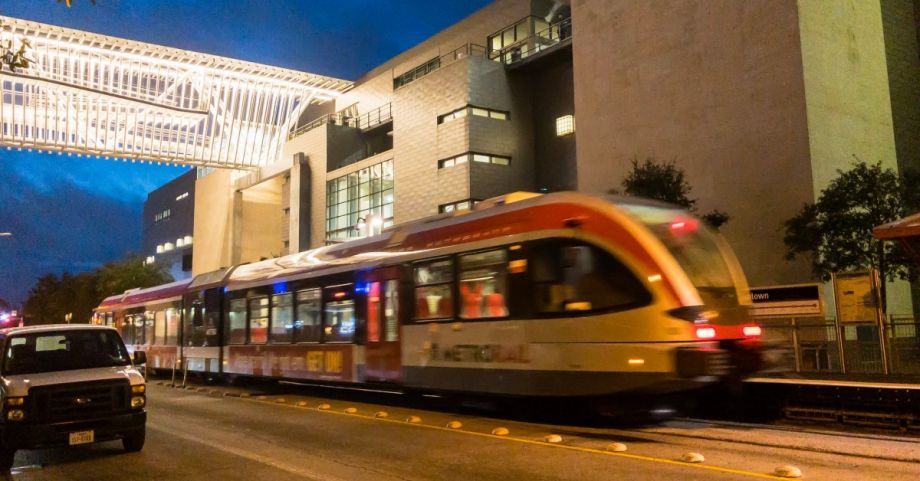
_600_350_80_s_c1.jpg)

